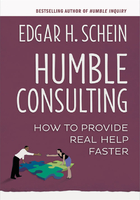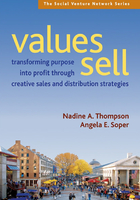Discovering an Orderly World
One learns to hope that nature possesses an order that one may aspire to comprehend.
—C. N. Yang
It has taken us a long while to get here—a nine-mile hike up a gradual ascent over rocky paths. My horse, newly trained to pack equipment and still an amateur, has bumped against my back, bruised my heels, and finally, unavoidably, stepped on my toe, smashing it against the inside of my boot. But it's been worth it. Here are the American Rockies at their clichéd best. The stream where I sit soaking my feet glistens on for miles I can't see, into green grasses that bend to the wind. There are pine trees, mountains, hawks, and off at the far edge of the meadow a moose who sees us and moves to hide her great girth behind a tree that is only four inches wide. The tree extends just to the edge of each eyeball. We laugh, but I suspect there's a lesson in it for all of us.
For months, I have been studying process structures—things that sustain their identity over time yet are not locked rigidly into any one physical form. This stream that swirls around my feet is the most beautiful one I've encountered. Because it is vacation, I resist thinking too deeply about this stream, but as I relax into its flow, images stir and gently whorl the surface.
Finally, I ask directly: What is it that streams can teach me about organizations? I am attracted to the diversity I see, to these swirling combinations of mud, silt, grass, water, rocks. This stream has an impressive ability to adapt, to change the configurations, to let the power shift, to create new structures. But behind this adaptability, making it all happen, I think, is the water's need to flow. Water answers to gravity, to downhill, to the call of ocean. The forms change, but the mission remains clear. Structures emerge, but only as temporary solutions that facilitate rather than interfere. There is none of the rigid reliance that I have learned in organizations on single forms, on true answers, on past practices. Streams have more than one response to rocks; otherwise, there'd be no Grand Canyon. Or Grand Canyons everywhere. The Colorado river realized there were many ways to find ocean other than by staying broad and expansive.
Organizations lack this kind of faith, faith that they can accomplish their purposes in varied ways and that they do best when they focus on intent and vision, letting forms emerge and disappear. We seem hypnotized by structures, and we build them strong and complex because they must, we believe, hold back the dark forces that threaten to destroy us. It's a hostile world out there, and organizations, or we who create them, survive only because we build crafty and smart—smart enough to defend ourselves from the natural forces of destruction. Streams have a different relationship with natural forces. With sparkling confidence, they know that their intense yearning for ocean will be fulfilled, that nature creates not only the call, but the answer.
Many of the organizations I experience are impressive fortresses. The language of defense permeates them: in CYA memo-madness; in closely guarded secrets and locked personnel files; in activities defined as “campaigns,” “skirmishes,” “wars,” “turf battles,” and the ubiquitous phrases of sports that describe everything in terms of offense and defense. Many organizations feel they have to defend themselves even against their employees with regulations, guidelines, time clocks, and policies and procedures for every eventuality. One organization I worked in welcomed its new employees with a list of twenty-seven offenses for which they could be summarily fired—and the assurance that they could be fired for other reasons as well. Some organizations have rigid chains of command to keep people from talking to anyone outside their department, and in most companies, protocols define who can be consulted, advised, or criticized. We are afraid of what would happen if we let these elements of the organization recombine, reconfigure, or speak truthfully to one another. We are afraid that things will fall apart.
This need to hold the world together, these experiences of fright and fragility, are so pervasive that I wondered about the phenomenon long before I came upon this teacher stream. Fear that is everywhere must come to us from somewhere. But where? In modern Western thought, I believe one source is our fuzzy understanding of concepts that gained strength from seventeenth-century science. Three centuries ago, when the world was imagined as an exquisite machine set in motion by God—a closed system with a watchmaker father who then left the shop—the concept of entropy entered our collective consciousness. Machines wear down; they eventually stop. In the poet Yeats' phrase, “Things fall apart; the center cannot hold, mere anarchy is loosed upon the world.” This is a universe, we feel, that cannot be trusted with its own processes for growth and rejuvenation. If we want progress, then we must provide the energy to reverse decay. By sheer force of will, because we are the planet's intelligence, we will make the world work. We will resist death.
What a fearful posture this has been! Something Atlas only imagined, it has gone on so long. It is time to stop now. It is time to take the world off our shoulders, to lay it gently down and look to it for an easier way. It is not only streams that have something to teach us. Lessons are everywhere. But the question is key. If not with us, then where are the sources of order to be found?
I believe nature offers abundant displays of order and clear lessons for how to achieve it. Despite the experience of fluctuations and changes that disrupt our plans, the world is inherently orderly. It continues to create systems of great scope, capacity, and diversity. And fluctuation and change are essential to the process by which order is created.
Life is about creation. This ability of life to create itself is captured in a strange-sounding new word, autopoiesis (from Greek, meaning self-production or self-making). Autopoiesis is life's fundamental process for creating and renewing itself, for growth and change. A living system is a network of processes in which every process contributes to all other processes. The entire network is engaged together in producing itself (Capra 1996, 99). This process is not limited to one type of organism—it describes life itself. As described by systems scientist Erich Jantsch, any living system is “a never resting structure that constantly seeks its own self-renewal” (1980, 10). And this description defines a paradox that is important to note when we think about change: A living system produces itself; it will change in order to preserve that self. Change is prompted only when an organism decides that changing is the only way to maintain itself.
There is another important paradox in living systems: Each organism maintains a clear sense of its individual identity within a larger network of relationships that helps shape its identity. Each being is noticeable as a separate entity, yet it is simultaneously part of a whole system. While we humans observe and count separate selves, and pay a great deal of attention to the differences that seem to divide us, in fact we survive only as we learn how to participate in a web of relationships. Autopoiesis describes a very different universe, one in which all organisms are capable of creating a “self” through their intimate engagement with all others in their system. This is not a fragile, fragmented world that needs us to hold it together. This is a world rich in processes that support growth and coherence through paradoxes that we need to contemplate.
In chemistry, Ilya Prigogine's prize-winning work also teaches a paradoxical truth, that disorder can be the source of new order. Prigogine coined the term “dissipative structures” for these newly discovered systems to describe their contradictory nature. Dissipation describes loss, a process of energy gradually ebbing away, while structure describes embodied order. Prigogine discovered that the dissipative activity of loss was necessary to create new order. Dissipation didn't lead to the death of a system. It was part of the process by which the system let go of its present form so that it could reorganize in a form better suited to the demands of its changed environment.
Prigogine's work has helped explain a long-standing contradiction of Western science. If, as science believed, entropy is the rule, then why does life flourish? Why does life result in newness and evolution, not deterioration and disintegration?
In a dissipative structure, anything that disturbs the system plays a crucial role in helping it self-organize into a new form of order. Whenever the environment offers new and different information, the system chooses whether to accept that provocation and respond. This new information might be only a small difference from the norm. But if the system pays attention to this information, it brings the information inside, and once inside that network, the information grows and changes. If the information becomes such a large disturbance that the system can no longer ignore it, then real change is at hand. At this moment, jarred by so much internal disturbance and far from equilibrium, the system will fall apart. In its current form, it cannot deal with the disturbance, so it dissolves. But this disintegration does not signal the death of the system. If a living system can maintain its identity, it can self-organize to a higher level of complexity, a new form of itself that can deal better with the present.
In this way, dissipative structures demonstrate that disorder can be a source of new order, and that growth appears from disequilibrium, not balance. The things we fear most in organizations—disruptions, confusion, chaos—need not be interpreted as signs that we are about to be destroyed. Instead, these conditions are necessary to awaken creativity. Scientists in this newly understood world describe the relation of disorder to order as “order out of chaos” or “order through fluctuation” (Prigogine and Stengers, 1984). These are new principles that highlight the dynamics between chaos and creativity, between disruption and growth.
At the quantum level of reality, the paradoxes grow even larger. At the subatomic level, change happens in jumps, beyond any power of precise prediction. Quantum physicists speak in terms of probabilities, not prediction. They can calculate the probable moment and location of a quantum leap, but not exactly. Newtonian physics operates with a different belief—that the world does behave in deterministic ways. (This assumption has been challenged by Prigogine's recent work; see 1998.)
The quantum world also challenges beliefs about objective measurement, for at the subatomic level the observer cannot observe anything without interfering or, more precisely, participating in its creation. The strange qualities of the quantum world have shaken prevailing scientific beliefs in determinism, predictability, and control. At first glance then, quantum physics doesn't seem to volunteer concepts that aid us in our search for a more orderly universe. But the impossibility of exact predictions at the quantum level is not a result of inherent disorder. Instead, the behaviors observed are a result of quantum interconnectedness, of a deep and intimate order. There is a constant weaving of relationships, of energies that merge and change, of momentary ripples that become noticeable within a seamless fabric. There is so much order that our attempts to separate out discrete events create the appearance of disorder.
Order has been found even in the event that historically has meant absolute disorder—chaos. Chaos theory has given us images of “strange attractors”—computer-generated pictures of swirling motion that trace the evolution of a system. A system is defined as chaotic when it becomes impossible to know what it will do next. The system never behaves the same way twice. But as chaos theory shows, if we look at such a system over time, it demonstrates an inherent orderliness. Its wild gyrations are held within an invisible boundary. The system holds order within it, and reveals this self-portrait as a beautiful pattern, its strange attractor (see the color section and page 117).
Throughout the universe, then, order exists within disorder and disorder within order. We have always thought that disorder was the absence of the natural state of order, seen in the word itself: dis-order. But do we believe this? Is chaos an irregularity, or is order just a lucky moment grabbed from natural disorder? We've been taught to see things as separate states: One needs to be normal, the other exceptional. Yet as we move into this new territory where paradox is a distinguishing feature, we can see that what is happening is a dance—of chaos and order, of change and stability. Just as in the timeless image of yin and yang, we are dealing with complementarities that only look like polarities. Neither one is primary; both are absolutely necessary. When we observe growth, we observe the results of the dance.
One systems scientist said that a system is a set of processes that are made visible in temporary structures. These living structures are in no way similar to the solid structures we build. The structures of life are transient; they are capable of changing if needed: “Caterpillar and butterfly, for example, are two temporarily stabilized structures in the coherent evolution of one and the same system” (Jantsch 1980, 6). The system continues to develop, to release itself from the old and find new structures as they are required.
While we have lusted for order in organizations, we have failed to understand where to find it. We have seen order reflected in the structures we build, whether they be bright mirror-glass buildings, dazzling charts, or plans begun on paper napkins. These structures take so much time, creativity, and attention that it is hard not to want them to be permanent. It is hard to welcome disorder as a full partner in the search for order when we have expended so much effort to bar it from the gates. I find myself challenged by this new land of evolving form, of structures that come and go, of bearings gained not from the rigid artifacts of organization charts and job descriptions, but from directions arising out of deep, natural processes of growth and self-renewal. This is not an easy land to inhabit, not an easy world in which to place faith, except that we're already living with the evidence that supports it—this wonderfully diverse and creative planet. And all of us, even in rigid organizations, have experienced self-organization, times when we recreate ourselves, not according to some idealized plan, but because the environment demands it. We let go of our old form and figure out how best to organize ourselves in new ways.
When I think about the work experiences I cherish most, I see such self-organization. In the interest of getting things done, our roles and tasks moved with such speed that they blurred to nothing. We were too engaged with the work to worry about defining accountabilities or roles. We all felt accountable for figuring out what worked and implementing it quickly. When people speak of informal leadership, they describe a similar experience—how people create the leadership that best responds to their needs at the time. We may fail to honor these leaders more formally, trapped as we are in our beliefs about hierarchy and power, but we always know who the real leader is and why we are willing to follow. Max De Pree, former CEO of Herman Miller, calls this “roving leadership, the indispensable people in our lives who are there when we need them” (1989, 41–42). They emerge from the group, not by self-assertion, but because they make sense, given what the group and individuals need so that they can survive and grow. Organization consultant Jill Janov states that leadership is best thought of as a behavior, not a role. We always need leaders, but this need can be satisfied by many different people, depending on the context (Janov 1994).
All this time, we have created trouble for ourselves in organizations by confusing control with order. This is no surprise, given that for most of its written history, leadership has been defined in terms of its control functions. Lenin spoke for many leaders when he said: “Freedom is good, but control is better.” And our quest for control has been oftentimes as destructive as was his.
If people are machines, seeking to control us makes sense. But if we live with the same forces intrinsic to all other life, then seeking to impose control through rigid structures is suicide. If we believe that there is no order to human activity except that imposed by the leader, that there is no self-regulation except that dictated by policies, if we believe that responsible leaders must have their hands into everything, controlling every decision, person, and moment, then we cannot hope for anything except what we already have—a treadmill of frantic efforts that end up destroying our individual and collective vitality.
What if we could reframe the search? What if we stopped looking for control and began, in earnest, the search for order? Order we will find in places we never thought to look before—all around us in nature's living, dynamic systems. In fact, once we begin to look into nature with new eyes, the teachers are everywhere.
I looked again at the moose, staring intently into that narrow beam of tree. Our search for safety, our belief that we can control our organizations by the structures we impose, is no less foolish. As long as we stare cross-eyed at that tree, we can't see all around us the innate processes of living systems that are there to help create the order we crave.
Yet it is hard to step away from that tree. It is hard to open ourselves to a world of inherent orderliness. “In life, the issue is not control, but dynamic connectedness,” Jantsch writes (1980, 196). I want to act from that knowledge. I want to trust in this universe so much that I give up playing God. I want to stop struggling to hold things together. I want to experience such security that the concept of “allowing”—trusting that the appropriate forms will emerge—ceases to be scary. I want to surrender my fear of the universe and join with everyone I know in an organization that opens willingly to its environment, participating gracefully in the unfolding dance of order.













